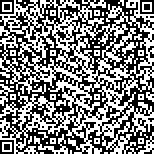马玉宝,朱健豪,樊志娇,等.肌内效贴联合生物反馈训练对前交叉韧带重建术后患者膝关节功能的影响[J].中华物理医学与康复杂志,2024,46(11):993-998
扫码阅读全文

|
| 肌内效贴联合生物反馈训练对前交叉韧带重建术后患者膝关节功能的影响 |
|
| |
| DOI:10.3760/cma.j.cn421666-20231219-01010 |
| 中文关键词: 肌内效贴 生物反馈训练 前交叉韧带重建术 |
| 英文关键词: Kinesiotaping Biofeedback training Anterior cruciate ligament reconstruction |
| 基金项目:2020年首都卫生发展科研专项(2020-2-2251);首都医科大学附属北京康复医院2021-2023科研发展专项(2021-003) |
|
| 摘要点击次数: 3329 |
| 全文下载次数: 3232 |
| 中文摘要: |
| 目的 观察肌内效贴(KT)贴扎联合Monitored Rehab Systems生物反馈训练(简称MRS训练)对前交叉韧带重建术(ACLR)后患者膝关节功能的影响。 方法 采用随机数字表法将22例ACLR术后患者分为MRS组和联合组,每组11例。2组患者均给予常规康复训练,MRS组在此基础上辅以安慰贴布(PT)贴扎,随后进行MRS训练,联合组则于KT贴扎后进行MRS训练,每次训练持续45 min,每周训练3次。于干预前、干预8周后分别对2组患者的患侧足支撑相、患侧足底各区冲量及下肢反应时进行检测。 结果 干预8周后发现2组患者的患侧足支撑相、患侧足底前足区(F区)、中足区(MF区)、足跟区(H区)冲量百分比及下肢反应时均较干预前显著改善(P<0.05),并且联合组患侧足支撑相[(39.13±1.08)%]、患侧足底F区、MF区、H区冲量百分比[分别为(7.20±1.17) %,(9.07±1.41) %和(20.45±1.72)%]及下肢反应时[(328.73±63.74)ms]均显著优于MRS组水平(均P<0.05)。 结论 KT贴扎联合MRS生物反馈训练能有效改善ACLR术后患者膝关节功能及姿势控制能力,其疗效优于单一MRS生物反馈训练,该联合疗法值得临床推广、应用。 |
| 英文摘要: |
| Objective To document any effect of combining kinesiotaping (KT) with Monitored Rehab Systems biofeedback training (MRS training) on the recovery of knee function after anterior cruciate ligament reconstruction (ACLR). Methods Twenty-two patients after ACLR were randomly divided into an MRS group and a combined group, each of 11. In addition to conventional rehabilitation training, the MRS group had placebo taping in place during their MRS training, while the combined group had KT applied. Each training session lasted 45 minutes, with three sessions per week. Before the experiment and after 8 weeks of treatment, the affected foot support phase, impulse of each area of the affected foot′s sole, and lower limb reaction time were measured. Results Significant improvement in the affected foot′s support phase and lower limb reaction time was documented in both groups, as well as in the average impulse percentage of the affected foot′s plantar forefoot area (F area), mid-foot area (MF area), and heel area (H area). All were significantly better in the combined group than in the MRS group, on average. Conclusion Supplementing MRS biofeedback training with kinesiotaping can more effectively improve the knee joint functioning and postural control of patients after ACLR surgery. The combination is worthy of clinical promotion and application. |
|
查看全文
查看/发表评论 下载PDF阅读器 |
| 关闭 |